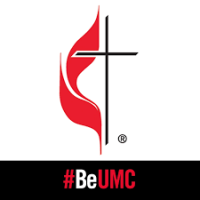
By Cindy Miles, Chancellor, Grossmont-Cuyamaca Community College District
April 7, 2012 (San Diego's East County) -- We always encourage our students to ask lots of questions and seek out new information. For the past few months, we in the Grossmont-Cuyamaca Community College District have been asking questions about our role in the community, how well we are doing, and what the future holds for us. Some of the answers are starting to come in.
Economic Impact Report
It is well established that a college education is invaluable, so how do you put a price on our contributions to changing our students’ lives and enhancing the East County community?
An economic impact report prepared by Economic Modeling Specialists, Inc., found that GCCCD contributes a whopping $477.5 million to the East County economy each year, counting the direct and indirect effects of our roles as a major employer and higher education provider. You can read the full report with student, taxpayer, social, and business perspectives on our GCCCD website. Our district plays a vital role in East County in so many ways – from the students who get better jobs as a result of their education to the people we employ and the business we provide for East County companies.
Some of the highlights from the report:
- On average, the lifetime income of Grossmont or Cuyamaca College students increases by $6 for every dollar they invest in their education.
- Our work leads to reduced welfare, unemployment, and crime, as well as improved health, saving the public an estimated $4.5 million each year.
- As one of East County’s largest employers, we provide more than $99 million per year in direct expenditures to the local economy.
We’ll be using this report to demonstrate to funders, legislators, investors, and other members of the community some of the very practical reasons why they should support our colleges.
Educational Master Plan
The economic impact report answered some of our questions about the present value of the district, while our Educational Master Plan (EMP) looks at trends that will help us determine how we can be of most value in the future. By examining developments in education, society, technology, the economy, the environment, and politics, our EMP shows us where we need to allocate our resources for the next decade of GCCCD planning. In keeping with our integrated planning and budget model, the EMP forms the blueprint for all our other major plans, including Strategic Plans, Annual Implementation Plans, Facilities Plans, Technology Plans,Human Resources Plans, and Diversity, Equity, and Inclusion Plans, all of which will now undergo updates to integrate with the EMP priorities. The EMP represents the collective work of many, many members of our colleges, district services, board of trustees, and external community. After a year of development and review through our districtwide consultative process, we expect it to receive final approval from our Governing Board this week.
State and GCCCD Budget
One of the biggest questions about our future regards the California budget. It’s hard to say when the state’s economy will turn around, but all indications are that it will be a long, slow recovery instead of a sudden return to prosperity. The latest projections from the state Legislative Analyst’s Office suggest Governor Brown’s proposed budget will be short by $6.5 billion – that’s billion, with a “B”! – even with extra state revenues from an initial public stock offering by Facebook. Various tax initiatives have been put forward by the Governor and other groups that could improve our budget prospects, but polling indicates that multiple tax proposals on the ballot increase the likelihood they all will fail.
A bit of hope was offered recently, in the form of a deal struck between Governor Brown and the backers of the Millionaires Tax to unite behind a single tax measure—an attempt to join forces to reduce competition and increase the likelihood of passage on the November 2012 ballot. The new merged initiative promises to “prevent further cuts to education” through a progressive tax structure raising income taxes for upper income earners (“millionaires”) through 2018 and increasing sales tax by ¼ cent (versus the ½ cent the Governor originally proposed) through 2016. Estimates are this blended measure would bring in $2 billion more than the Governor’s original initiative to support all levels of education, public safety, and other important state services.
Naturally, there is no promise that this joint proposal will pass, and some say it may even fare worse than individual approaches. So we are obligated – and warned by the State Chancellor’s Office – to prepare our budget for next year under the conservative assumption that a tax initiative will not pass. This means we must plan for major midyear trigger cuts again next year, and we must prepare for the prospect of our financial challenges continuing over the next several years.
As I noted last month, our rainy day fund has been devastated. We were prepared for the $6.3 million midyear cut, but the state’s second surprise cut of $2.8 million forced us into our savings to cover this brutal double-whammy. Now, we are left with half our usual reserves to carry into 2012-13, and it has been these year-end savings that have protected us from the brunt of Sacramento budget vagaries in recent years. Along the way, our fixed costs – which include step and column increases, health benefits, utilities, payroll taxes, and retirement increases – have been increasing by about $2 million per year, every single year. Clearly, even a “flat” year-to-year budget would leave us behind. We’ve had three sustained years of reductions amounting to more than $35 million in lost state revenue, and we now face the fourth.
Our District Strategic Planning & Budget Council has worked on solutions to cut expenses and gather savings for several months, and has reduced our 2012-13 “worst case scenario” shortfall significantly. That’s why we are freezing overtime, comp time, travel, and purchases unless they are determined to be of an absolutely critical nature. Almost all positions on the critical hire list are being delayed, except those that are cost-neutral or are an accreditation, legal, or strategic imperative. Saddest of all, we will have to cut our FTE allocations down to the worst-case funding cap for next year (meaning we’ll have to cut another 477 course sections, on top of the 1,600 we have already cut). Unfortunately, even with those steps, we are still left with a nearly $5 million gap that we’ll need help from employees to fill, if the worst comes to pass.
We need every one in the district to take part in getting us through this next phase of austerity in California higher education. Beginning this week, I’ll be meeting with leaders of our various labor units to discuss how we can prepare to meet next year’s budget challenge. I remain absolutely confident that we will come to collective, fair, honest, and manageable solutions together, just as we have worked through every other challenge over the last three years.
For your specific questions regarding negotiable items, such as employee “give-backs,” furloughs, health benefits adjustments, early retirement incentives, suspension of salary increases, etc., please reach out to your labor unit representatives. We’ll also continue to hold budget forums and invite your input and advice. Not many easy options are left, but I still read every entry in the budget suggestion box: budget.suggestions@gcccd.edu. Our approach will be to identify solutions with our labor leaders for the worst-case budget scenario, which we would then retract if the tax incentives pass in November.
We’ll keep monitoring the political winds with an eye on budget and ballot processes, so we can act to support whatever best helps our institution. And we’ll keep moving toward alternative revenues. A community advisory group has been working with us to explore the feasibility of pursuing another capital bond campaign – not an easy sell these days, but we must consider all options. In addition, our Foundation has launched a “Possibilities Roundtable” annual campaign to raise funds specifically for student scholarships and our educational programs.
Our Governing Board and GCCCD leadership team remain committed to supporting our students and employees to the best of our abilities through these tough times. Let me assure you that no layoffs are even being discussed, much less planned. Our conservatively optimistic approach remains: Prepare for the worst, and work as hard as humanly possible for the best!
I am certain that California’s financial situation will improve with time, but to get through this prolonged tough stint, we must both hold closely together and reach deeply into our personal spaces of patience and trust.
Annual Report to the Community
Let me end with a spot of positive information for you to consider. We recently unveiled our 2011 Annual Report to the Community. Each year’s report is posted on our website and shared with the public to underscore the important role GCCCD plays in East County and to promote transparent communication about how our district uses its public funds. This year’s beautiful design honors the 50thanniversary of the district and the many building blocks of people, planning, and vision that make GCCCD a great place to work and learn!
Take a few minutes to enjoy this report—there’s even a cool online version that allows you to electronically flip through the pages. I’m sure you will be as inspired as I was by the uplifting images and stories of our students, employees and supporters who make our colleges and district so special. In these trying times, we need to remember why we do this important work of transforming lives through learning.
[Note: As good stewards of resources and the environment, we have limited print copies and are distributing the report mostly by email, but if you would like a printed copy, contact Anne Krueger in the District Public Information office.]
Keep the faith. And, thanks for what you do every day – believe me, it matters!
Sincerely,
Cindy L Miles
Chancellor, Grossmont-Cuyamaca Community College District











Recent comments